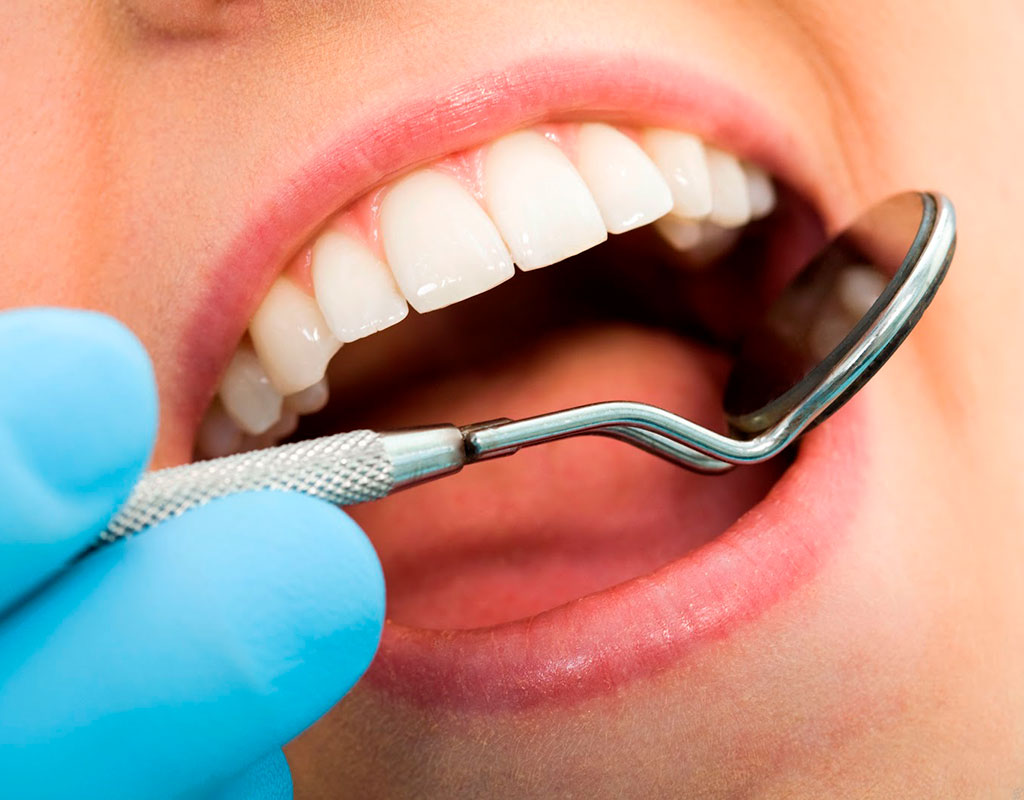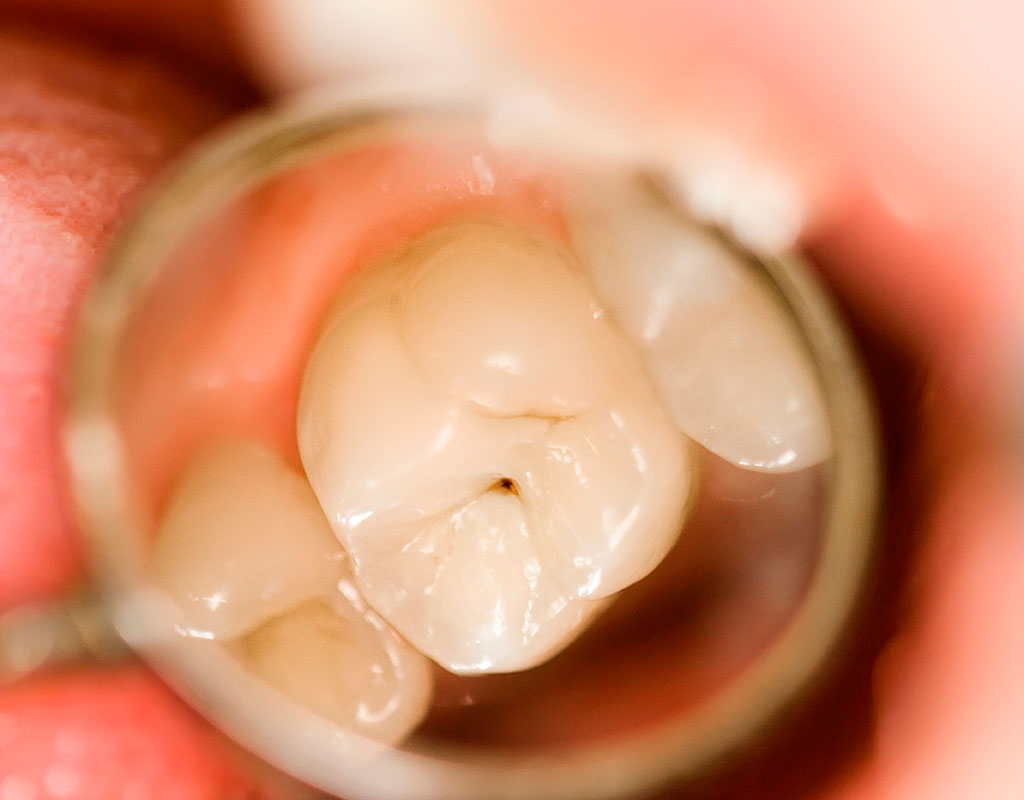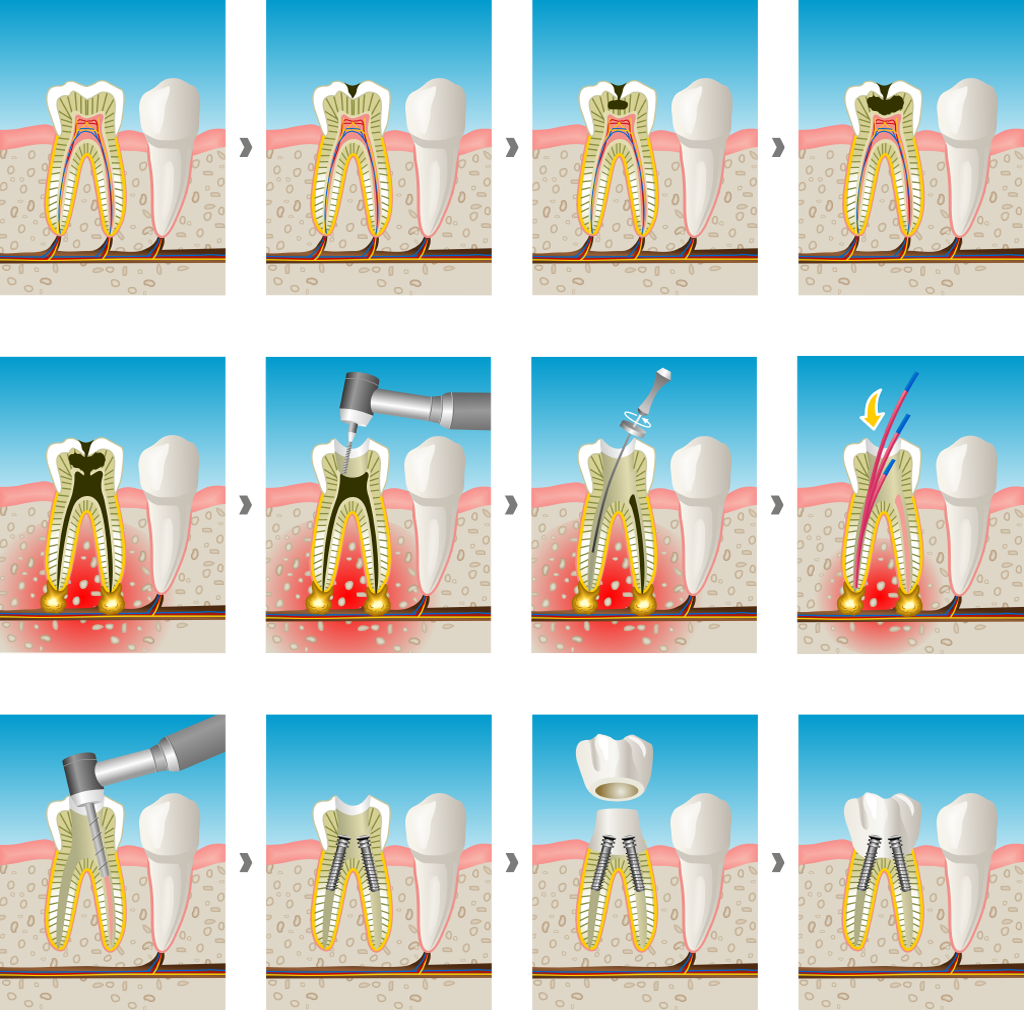Dental caries (or cavities) is one of the most frequent infectious diseases in the world and it is caused by both diet and a poor oral hygiene. This is a chronic disease that progresses slowly and that everybody is susceptible to getting throughout his or her lifetime, but it is also a preventable disease. It is the main cause of toothache and teeth loss.
At Aldana Dental Clinic in Santa Coloma de Gramenet, we treat dental cavities so that we eliminate them and prevent their recurrence over time.
Professionals recommend regular visits (annually or biannually) to supervise there are no new cavities.

Let us explain how cavities are formed and their treatment with Endodontics:
Cavities
Dental cavities (or caries) are a bacterial infection that causes the mineral loss of dental enamel due to acids found in the fermentation of sugars and starch, which forms the plaque in teeth.
The disease may affect both the crown (crown cavity) and the root of primary and permanent teeth (root cavity). When a cavity advances, it can cause an infection of the tooth nerve, which causes toothache and inflammation.
The main sources of cavities are the following: bacteria, unsuitable food, a genetic predisposition and time. This is why it is very important to have a correct oral hygiene.
The treatment for cavities at Aldana Dental Clinic in Santa Coloma de Gramenet consists in two main phases: the elimination of both the infectious source and damaged tissue, and the restoration or rehabilitation of the tooth when necessary.

Endodontic or root canal treatments
When the cavity progresses and infect the internal tissue of teeth, it causes the death of dental pulp, that is, the organic material that contains the veins that irrigate the tooth is destroyed by the infection.
This is when it is necessary to perform an endodontic treatment, popularly known as a root canal. It mainly consists in surgically removing de dental pulp to then fill and seal the cavity with an inert material.
To clean the dental cavity from any infected organic material, specific instruments such as thin rasps are used. The aim is to leave the dental piece as sterilized as possible before filling and sealing it.
In the sealing process, different inorganic and inert materials are used with the purpose of filling the root, thus reaching the greatest number of root canals. Lastly, the visible part of the cavity is pasted.
In the event the crown area was destroyed by caries or its structure was too weak, a rehabilitation with an inlay or a prosthetic crown is performed.

